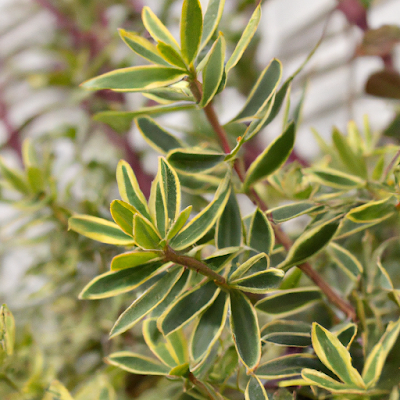Crested Late Summer Mint, Elsholtzia ciliata
What are the key characteristics of Crested Late Summer Mint, Elsholtzia ciliata?
It possesses several key characteristics that make it a remarkable plant. Here are some of its notable features:
1. Appearance:
This mint is an herbaceous perennial plant that typically grows up to 1 meter in height. It has a dense, bushy growth habit with numerous erect stems covered in serrated, lance-shaped leaves.
2. Foliage:
The leaves are vibrant green and glossy, giving the plant an attractive appearance. They are characterized by fine hairs along the leaf margins, which add a delicate touch to the overall aesthetic.
3. Flowers:
This plant produces beautiful clusters of small, tubular flowers that bloom in late summer or early autumn. The flowers are usually a pale purple or lavender color, creating a visually appealing contrast against the green foliage.
4. Fragrance:
One of the most distinctive qualities is its delightful minty fragrance. When the leaves are crushed or brushed against, they release a refreshing scent that adds an aromatic element to any garden or landscape.
5. Medicinal Uses:
It has been used in traditional medicine for various purposes. Its leaves are often brewed into herbal tea and believed to possess antipyretic (fever-reducing) and anti-inflammatory properties.
6. Culinary Applications:
In certain cuisines, the leaves are used as a culinary herb to enhance the flavor of various dishes. Adding a hint of minty freshness, it can be utilized in salads, soups, stir-fries, and even desserts.
7. Low Maintenance:
This plant is relatively easy to cultivate and requires minimal care once established. It thrives in well-drained soil and prefers full sun to partial shade conditions. Regular watering and occasional pruning will help maintain its health and appearance.
Crested Late Summer Mint, with its attractive foliage, charming flowers, delightful fragrance, and potential medicinal and culinary uses, can be a valuable addition to gardens, herb beds, or even indoor plant collections.
What are the potential uses of Elsholtzia ciliata in culinary or medicinal applications?
Elsholtzia ciliata has various potential uses in both culinary and medicinal applications. Let's explore them:
1. Culinary uses:
- Aromatic herb:
It is highly aromatic and can be used as a culinary herb to enhance the flavor of dishes. Its leaves have a unique citrusy and minty aroma.
- Flavor enhancer:
The leaves can be used to add a refreshing taste to soups, stews, stir-fries, and salads.
- Infusions and teas:
Dried leaves of it can be used to make flavorful infusions or teas, which are believed to have a calming effect.
2. Medicinal uses:
- Traditional medicine: Elsholtzia ciliata has been used in traditional medicine for centuries. It is believed to have various health benefits such as relieving cold symptoms, reducing fever, aiding digestion, and soothing respiratory issues.
- Antioxidant properties: Studies suggest that the herb possesses antioxidant properties that may help protect cells from damage caused by free radicals.
- Anti-inflammatory effects: Some research indicates that certain compounds found in the herb may possess anti-inflammatory properties, which could potentially be useful in managing inflammatory conditions.
However, it's important to note that further scientific research is needed to establish the full extent of its medicinal properties and potential applications.
Always consult with a qualified healthcare professional or herbalist before using any herb for medicinal purposes.
Are there any unique features or benefits of using Elsholtzia ciliata compared to other mint varieties?
Absolutely! It offers several unique features and benefits that set it apart from other mint varieties.
1. Distinctive Flavor:
Elsholtzia ciliata boasts a bold and tangy flavor that sets it apart from traditional mint varieties. Its unique taste adds an exciting twist to various dishes and beverages, making it a favorite among culinary enthusiasts.
2. Culinary Versatility:
This mint variety is incredibly versatile in the kitchen. It complements a wide range of cuisines, including Vietnamese, Thai, Malaysian, and Indian. Whether you're adding it to soups, salads, stir-fries, or even cocktails, it adds a burst of flavor that enhances any culinary creation.
3. Medicinal Properties:
The herb is not only delicious but also offers several health benefits. It is rich in essential oils and antioxidants that may have anti-inflammatory and antibacterial properties. Traditionally used in herbal medicine, this mint variety is believed to aid digestion, relieve cold symptoms, and promote overall well-being.
4. Easy to Grow:
If you enjoy gardening or growing your own herbs, it is an excellent addition to your collection. It is relatively easy to grow in both indoor and outdoor settings. With minimal care and maintenance, you can have a fresh supply of this unique mint readily available whenever you need it.
5. Aesthetic Appeal:
It features attractive foliage with serrated leaves and vibrant green coloration. Its visually appealing appearance makes it an excellent choice for garnishing dishes or adding a touch of elegance to your herb garden.
Overall, it stands out among other mint varieties due to its distinctive flavor profile, culinary versatility, potential health benefits, ease of cultivation, and aesthetic appeal. Whether you're a home cook or a professional chef, incorporating this unique mint variety into your recipes can elevate your culinary experience to new heights.
What is the historical significance or cultural importance of Crested Late Summer Mint?
The Crested Late Summer Mint holds historical significance and cultural importance in various ways. Allow me to shed light on these aspects:
1. Traditional Medicine:
It has been used for centuries in traditional medicine systems across Asia, including Traditional Chinese Medicine and Ayurveda. It is believed to possess medicinal properties that can help with ailments such as digestive disorders, respiratory issues, fever, and headaches.
2. Culinary Uses:
The leaves are often incorporated into culinary dishes in many Asian cuisines. The herb imparts a unique aroma and flavor to soups, salads, stir-fries, teas, and even desserts. Its culinary application adds depth and character to traditional recipes, making it an integral part of the region's cuisine.
3. Cultural Symbolism:
In certain cultures, the Crested Late Summer Mint holds symbolic value. For example, in Korea, it is considered a symbol of good luck and is often used to celebrate important occasions such as weddings and New Year festivities. The plant's vibrant green color and pleasant fragrance make it a popular choice for decorations and traditional rituals.
4. Ecological Importance:
It plays a vital role in maintaining ecological balance. It attracts pollinators like bees and butterflies, contributing to the pollination process and supporting biodiversity. Additionally, its ability to thrive in various climates makes it an adaptable species that aids in soil stabilization and erosion control.
5. Historical Uses:
Throughout history, it has been utilized for its aromatic properties. In ancient times, its leaves were commonly used as natural air fresheners or strewing herbs to mask unpleasant odors within households or public spaces.
Overall, the Crested Late Summer Mint has left an indelible mark on various aspects of Asian culture and history. Its traditional medicinal applications, culinary uses, cultural symbolism, ecological importance, and historical significance all contribute to its enduring cultural relevance.




Comments
Post a Comment